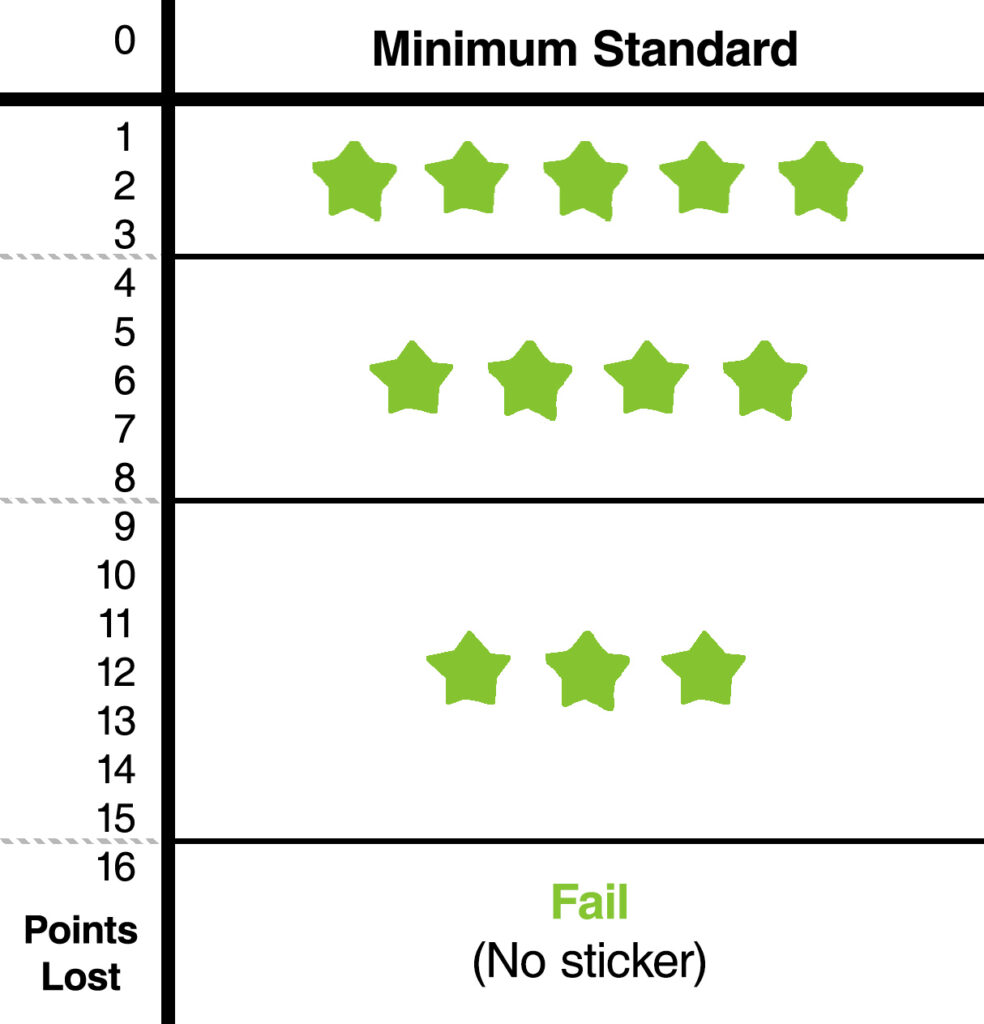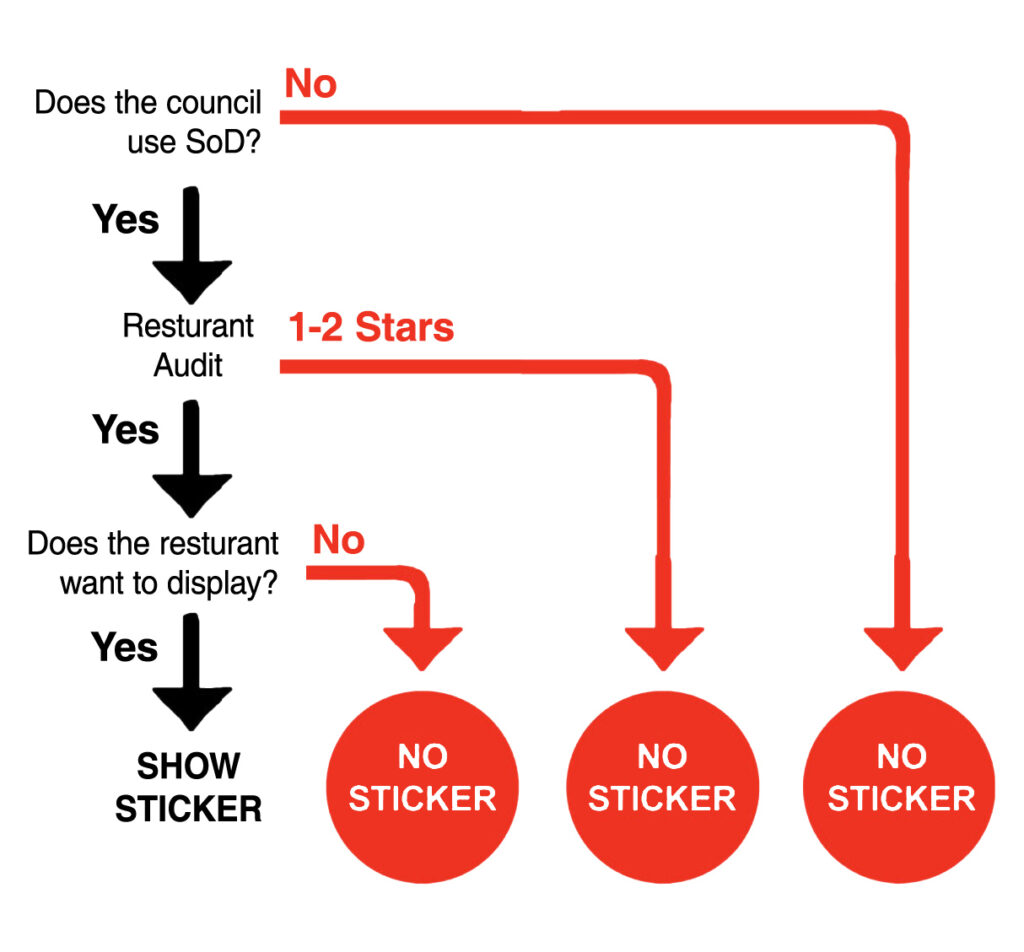How Does Scores on Doors Work?

Scores on Doors operates on a demerit system where a venue accumulates more points for each mistake, aiming to achieve the lowest score possible. The final rating is determined by the total points they accumulate. But wait a second, shouldn’t the minimum requirements be the standard?
With this kind of model a 5-star restaurant represents meeting the legal requirements for selling food to the public and a 4-star restaurant is failing to meet its legal requirements but is still given a ‘very good’ rating.
Worst of all If they fail more than 15 points or have any critical food safety failure (worth 8 points) there is often no immediate penalty, they just don’t get a sticker for the window.
Well thats fine, consumers just need to steer clear of restaurants without stickers, Right?
Well, not quite. Here’s the kicker: the Scores on Doors program is entirely voluntary. Each restaurant decides if they want in. Furthermore, each council can also choose whether or not to participate. So a lack of a sticker on a restaurant could mean the following:
- The council decided not to participate
- The restaurant decided not to participate
- The restaurant failed with a rating below 3 stars
- The restaurant decided not to display its 3 - 4 star award

“But maybe it’s very easy to lose points, and losing 15 points is no big deal.” Guess again. Currently, a restaurant can lose over 100 points. Here are some examples of problems and the points deducted for each:
- Food handlers wearing dirty clothes = 1 point
- Single-use items (e.g. disposable utensils) being reused = 1 point
- Animals in areas where food is handled = 1 point
- Cracked or chipped glasses and plates = 1 point
- Food handlers smoking and spitting in food handling areas = 4 points!
Now, imagine a restaurant falling short on these 5 issues and still clinching a respectable 4-star rating. Most consumers would likely assume they passed reasonably and they’d peacefully dive into a bowl of fettuccine with a sprinkle of ash and a side of spittle.